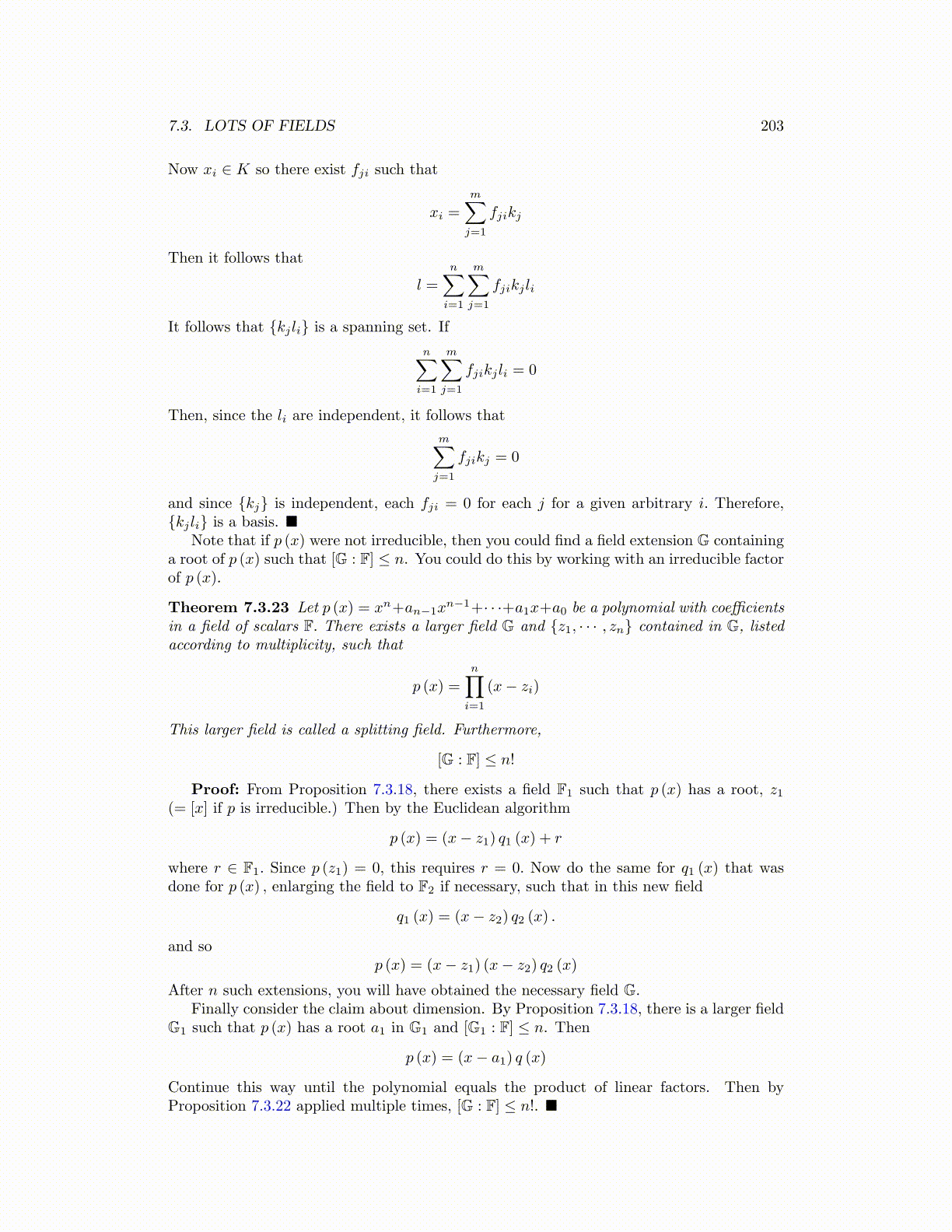
7.3. LOTS OF FIELDS 203
Now xi ∈ K so there exist fji such that
xi =
m∑j=1
fjikj
Then it follows that
l =
n∑i=1
m∑j=1
fjikj li
It follows that {kj li} is a spanning set. If
n∑i=1
m∑j=1
fjikj li = 0
Then, since the li are independent, it follows that
m∑j=1
fjikj = 0
and since {kj} is independent, each fji = 0 for each j for a given arbitrary i. Therefore,{kj li} is a basis. ■
Note that if p (x) were not irreducible, then you could find a field extension G containinga root of p (x) such that [G : F] ≤ n. You could do this by working with an irreducible factorof p (x).
Theorem 7.3.23 Let p (x) = xn+an−1xn−1+· · ·+a1x+a0 be a polynomial with coefficients
in a field of scalars F. There exists a larger field G and {z1, · · · , zn} contained in G, listedaccording to multiplicity, such that
p (x) =
n∏i=1
(x− zi)
This larger field is called a splitting field. Furthermore,
[G : F] ≤ n!
Proof: From Proposition 7.3.18, there exists a field F1 such that p (x) has a root, z1(= [x] if p is irreducible.) Then by the Euclidean algorithm
p (x) = (x− z1) q1 (x) + r
where r ∈ F1. Since p (z1) = 0, this requires r = 0. Now do the same for q1 (x) that wasdone for p (x) , enlarging the field to F2 if necessary, such that in this new field
q1 (x) = (x− z2) q2 (x) .
and sop (x) = (x− z1) (x− z2) q2 (x)
After n such extensions, you will have obtained the necessary field G.Finally consider the claim about dimension. By Proposition 7.3.18, there is a larger field
G1 such that p (x) has a root a1 in G1 and [G1 : F] ≤ n. Then
p (x) = (x− a1) q (x)
Continue this way until the polynomial equals the product of linear factors. Then byProposition 7.3.22 applied multiple times, [G : F] ≤ n!. ■